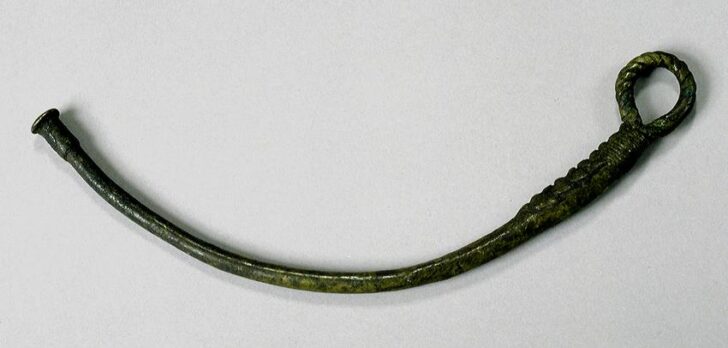Pendant
Northern Cameroon; Northeastern Nigeria; Southern Chad

Description
Subject Matter:
This object listed as made by Kirdi peoples, while most likely correct, is not without issue. “Kirdi”, meaning pagan, was the label given to the various peoples from northern Cameroon, northeastern Nigeria, and southern Chad by neighboring Fulani and Kanuri peoples because they did not practice Islam, while the latter do. The people collectively known as “Kirdi” are actually many different cultural groups with their own customs. However, due to a lack of information on where exactly this object came from, it is not possible to say with certainty which group of people created it.
Although it is unclear exactly what this object is, it could have been a pendant for a woman's apron or belt, a pendant for a necklace, or the foundation piece for a woman's apron. Objects of a similar shape and size have been seen in many of these contexts.
References Cited:
Gebauer, Paul. 1979. Art of Cameroon. Portland, Or.: Portland Art Museum.
Lembezat, Bertrand. 1961. Les populations païennes du Nord-Cameroun et de l'Adamaoua. Paris: Presses Universitaires de France.
Lembezat, Bertrand. 1952. Mukulehe; un clan montagnard du Nord-Cameroun; coutumes, rites, croyances. Paris: Berger-Levrault.
Northern, Tamara. 1984. The Art of Cameroon. Washington, D.C.: Smithsonian Institution.
Page, Donna. 2007. A Cameroon World. New York: QCC Art Gallery Press.
Physical Description:
Curved brass rod with a braided loop at one end. There is a raised pattern in the shape of leaves near the loop.
Usage Rights:
If you are interested in using an image for a publication, please visit https://umma.umich.edu/request-image/ for more information and to fill out the online Image Rights and Reproductions Request Form.